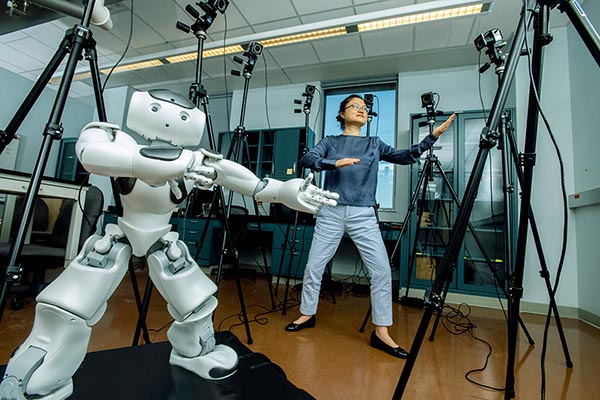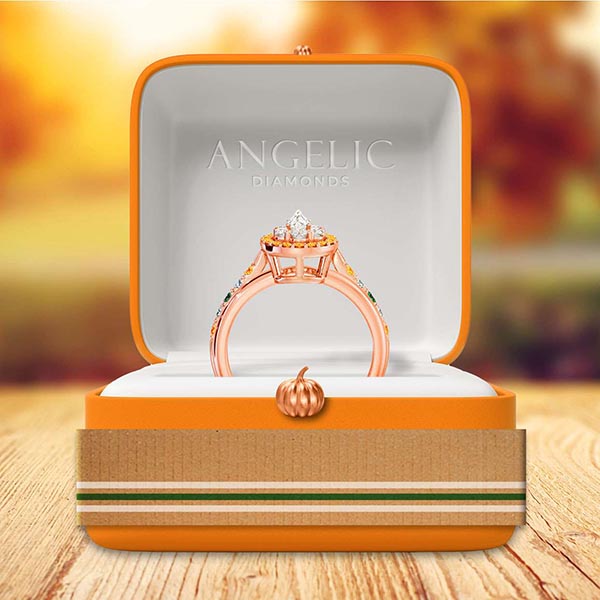Manga!
Do you like manga? If not, then this collection might be for you, since it is not actually designed to be read—and in fact physically (or legally) can’t be. (And Frank thinks he has an interesting book.)
Via The Guardian, manga One Piece by Eiichiro Oda has been serialized in the Japanese magazine Sh?nen Jump every week since 1997. The entire series has been compiled into a massive 21,450-page book, billed as “the longest book in existence” (have they checked out James Michener’s bibliography?). However, the book was not authorized by either the author or the publisher—it was self-printed and bound by multidisciplinary artist Ilan Manouach who conceived of the book as a sculpture and not a book, the point being “to highlight the way comics exist as both commodity and literature.”

JBE
Neither Manouach nor his French publisher JBE gave any consideration to securing the rights to the manga: “There could be no infringement of copyright, the publisher believes, because it is physically impossible to read the book.” Indeed, the way the book was bound, trying to actually read it would break its spine.
A spokesperson for JBE told the Guardian that ONEPIECE is an “unreadable sculpture that takes the shape of a book – the largest one to date in page numbers and spine width – that materialises the ecosystem of online dissemination of comics.” Whatever it is classed as, there certainly seems to be a market for ONEPIECE – the limited edition run of 50 copies sold out within days of its release on 7 September.
This probably isn’t all that different from people who buy deluxe, leatherbound books strictly for show with no intention of ever reading any of them.
The Number of the Bird
Do you like birds? House numbers? Well, why not combine them! Via Core77, house numbers that double as birdhouses.
Designed by Poland-based industrial designers Mikolaj Nicer and Pawel Frej, they’re intended for cities. “Urban bird populations are often the best opportunity for interacting with the wildlife a city dweller has,” they write. “We should respect this chance and support our winged neighbors.”
“The lack of nesting opportunities is one of the most important factors limiting the success of urban bird populations. Modern building technologies and concepts of city space organization leave little room for opportunistic nesting.”
“The outer casing of the Our Common House module is made of natural fired clay. The clay casing covers the nesting box made of natural wood (pine, oak, or poplar) which offering a comfortable breeding opportunity to the birds and protection from the elements and urban predators. The front panel can be removed allowing for cleaning and maintenance after the nesting season.”

I’m sure they won’t complain if you install these in the suburbs or country. However, if you do, best not to invite Tippi Hedren over.
Signs of the Queen
Queen Elizabeth II may be gone, but her face remains on a wide variety of objects and surfaces. As a result, there is going to be a boon for companies or organizations tasked with replacing her face with Charles’. Says the New York Times:
Her face is on British money — the blue five-pound notes, the bronze one-pound coin. It’s on post boxes and stamps. The royal coat of arms is on condiment jars and jackets. Since her death this month, Queen Elizabeth’s face has been all over nonstop news coverage. But before long, the visage of King Charles III will replace his mother’s in official and unofficial capacities.
Bank notes, coins, and stamps will need to be redesigned and reprinted/minted, but there is no great hurry—and in fact some of these items were in the process of being redesigned anyway. Stamps, for example, are in the process of having bar codes added, and the Bank of England is replacing paper-based currency with a polymer material to help prevent counterfeiting and germ transmission.
Still, there are private companies that also use the Queen’s coat of arms. About 800 brands have “warrants” to use royal images—to be eligible, the company must have provided products and/or services to the royal family for at least five of the past seven years.
More than 600 enterprises, including Barbour, Command Pest Control and Swarovski, currently have warrants granted by Queen Elizabeth II, according to the Royal Warrant Holders Association.
Cute how they slipped Command Pest Control in there thinking we wouldn’t notice. Taking care of the royal roaches? You’d have thought all the Corgis would have been good for that.
Now that Queen Elizabeth has died, companies like Heinz, which received warrants from her, have two years to continue to use the coat of arms. After that period is up, Heinz must update ketchup bottles that circulate in Britain, though it may not be a significant cost.

Alexander Coggin for the New York Times
So label printers, take heed!
And there are other products as well.
Other unofficial goods are seeing the market effect of the Queen’s death, too. Silk Road Bazaar, for example, makes felt ornaments it sells on Etsy and to wholesale clients, catering to Anglophiles. Its designs include Queen Elizabeth, an orange and white corgi, Big Ben, and now, King Charles and Camilla, queen consort.
AI-Yi-Yi, Part the Infinity: He Do the Police in Different Voices
Do you need a voiceover for a presentation, podcast, video, audio version of a magazine article, or webinar sponsor talk track? Via Boing Boing, Micmonster is an AI-powered “speech engine” that features library of more than 600 voices to choose from in more than 120 languages.
Male, female, Spanish, French, angry, sad — this program has all the voiceover options you could ever want, and then some. Simply input the text you want to convert to speech, select the voice you want to narrate, and Micmonster will work its magic. You can also fine-tune the inflection, pitch, emphasis, and pauses to create natural, life-like voices.
...Need several narrators? Try out the multi-voice function, which allows you to assign different portions of a script to multiple voices. For select languages (U.S. and U.K. English, French, and Chinese), there are even child voices available for speech synthesis!
And a lifetime subscription only goes for $59.
Down the Tube
When you think of iconic London symbols you immediately think of Big Ben (technically Elizabeth Tower, and so far there are no plans to change the name), the Tower of London, maybe the London Eye, but just as iconic is the London Underground (aka Tube) map. Comedian Jay Foreman’s “Unfinished London” video series takes a look at the complex history of the Tube map.

When underground railroads were first constructed and were opening in London in the late 1800s, there were multiple lines operated by different and competing private companies. System maps were published by the companies themselves and tended to show only their own lines and rarely, if ever, other rail lines around the city. And transferring from one line to another to get to a specific destination was not an easy process. Wouldn’t rail service be much quicker and efficient—and attract more riders—if it were a unified system? Yes, but…
it would take someone with a colossal bank account to make that happen. Fortunately for Londoners, in 1902 that someone came along in the form of ambitious American railway Tycoon Charles Tyson Yerkes…Charles’s very American idea was to run a railway network a group of lines stretching in all directions across the city where with one ticket, you could start your journey on one line and end it on another. So he set up a company called Underground Electric Railways of London Or UERL for short.
It opened in 1905. A unified rail system also needed a unified rail map—and one was created, which introduced subway map features that are standard today, like different lines in different colors, etc. However, the first attempt at a Tube map had too much information for it to be easily read.
By the 1920s, London—and the Underground—began to sprawl out to the suburbs, and mapping the system became more of a challenge. To help, the UERL appointed a new Director of Publicity, Frank Pick, who decided the system should look and feel more unified. Thus, he was the one who introduced the iconic (that word again!) “roundel,” the red and blue bar and circle that contained the station name and insisted that all Underground signage use the same typeface (Johnston). He also commissioned a new map from a designer named Frank Stingemore. His key to readability? Don’t draw it to scale. This had been a big no-no in past designs—all maps are drawn to scale, right?—but unless you’re actually driving the train, and arguably not even then, you really don’t need to know the exact distance between stations.
Stingemore’s design was revamped by the designer most closely associated with the Tube map: Harry Beck, who based his map design on an electrical diagram, using straight horizontal, vertical, and diagonal lines. It was a simple, elegant design that took the whole not-draw-it-to-scale thing and completely threw it out the window, making each station equidistant. It was technically a diagram and not a map, and made it immeasurably easier to use to get around the system
The only thing was, Beck had created it on his own as a hobby (he had been fired from the UERL a bit earlier) and when he presented it to Pick, Pick hated it (he still wanted some semblance of scale). But Beck was persistent and Pick agreed to publish a trial run—but only if Beck left him alone. A small run of the new map was placed at a limited number of stations, with a cover note encouraging comments—which were overwhelmingly positive.
In 1933, Harry Beck’s diagram officially replaced Frank Stingemore’s map as the standard journey planner used on all leaflets and all posters across the London Underground.
The video is worth watching for the historical “reenactments” alone:
Graphene Gets Active
Was it a good week for graphene news? It’s always a good week for graphene news! Advanced materials developer Versarien entered into a commercial agreement with Brazilian sports and activewear manufacturer BiaBrazil to integrate Versarien’s Graphene-Wear technology into a new range of women and men’s activewear. From Graphene-Info:
“We are hugely excited to be in partnership with BiaBrazil,” said Versarien chief executive Neill Ricketts. “Through our partnership we will be able to create garments that have been designed with comfort, style and design in mind, whilst also maintaining high levels of quality and performance with our Graphene-Wear technology.”
Versarien’s Graphene-Wear is designed to imbue garments with enhanced thermal and moisture management (see white paper here).
Tai One On
Zhi Zheng, an assistant professor of biomedical engineering in RIT’s Kate Gleason College of Engineering, has developed a humanoid robot that can teach humans tai chi. Her specialty is developing robotics and virtual reality systems as part of her assistive technology work.
Says RIT:
“My major research direction is for individuals with developmental disorders. Many core technologies are transferable to other populations such as older adults with mild cognitive impairment,” said Zheng, who leads the Intelligent Interaction Research Lab. The lab is focused on several funded technology-mediated initiatives including healthcare for older adults with multiple chronic conditions and interventions for individuals with Autism Spectrum Disorder (ASD).
The Tai Chi leader is an NAO Robot, and although only about 2 feet tall, it is a highly sophisticated system that can be programmed with specific functions and tasks.

A popular mind-body exercise, Tai Chi consists of choreographed motions, meditation, and proper breathing. Different movements require the practitioner to rely on many cognitive functions such as working memory and visual-spatial processing to memorize the patterned gestures. Movement stimulates blood flow through the brain, and for older adults, this has been shown to be beneficial to longevity, memory, and learning.
76 Virtual Trombones
We confess that we’re not all that big on videogames here in the AtW Cultural Accretion Bunker, but we understand that latest game craze is something called Trombone Champ.
Says The Guardian:
Trombone Champ is not serious; it is a wonderful blend of accidental musical comedy, trading-card collection, made-up facts about trombones and hotdogs (“The first trombone was made in 200,000,000BC”), and true facts about baboons. (Don’t ask about the baboons. This game has unexpected secrets and the baboons are one of them.)
Playing it is, remarkably, as funny as watching it on video, at least for the first few songs. You move the trombone’s slider with your mouse and click or press a key to toot it. The noises you come out with bear only the vaguest relationship to music. The visuals are eerily comical: Rosamunde is accompanied by bierkrugs and pretzels leaping and twirling majestically on-screen. During a truly appalling rendition of God Save Our King, photos of London Bridge and the union jack fades reverently in and out of view in the background, followed by a giant jpeg of a cooked breakfast.
The world's first trombone rhythm game is instantly a GOTY contender. And no, I'm not kidding. Turn up the volume and hear Beethoven like you've never heard it before. https://t.co/Qu7Cmkhjzc pic.twitter.com/jTXNdWx3Zm
— PC Gamer (@pcgamer) September 20, 2022
Enjoy if you dare!
A Pleurality of Microbots
The phrase “microscopic swimming robots” sounds like it refers to something that could skeletonize an unwitting bather in seconds, but could actually be the key to curing severe respiratory infections. From Science Alert:
Scientists have been able to direct a swarm of microscopic swimming robots to clear out pneumonia microbes in the lungs of mice, raising hopes that a similar treatment could be developed to treat deadly bacterial pneumonia in humans.
The microbots are made from algae cells and covered with a layer of antibiotic nanoparticles. The algae provide movement through the lungs, which is key to the treatment being targeted and effective.
In experiments, the infections in the mice treated with the algae bots all cleared up, whereas the mice that weren't treated all died within three days.
It’s still just in the proof-of-concept stage, but the researchers are optimistic.
“Based on this mouse data, we see that the microrobots could potentially improve antibiotic penetration to kill bacterial pathogens and save more patients’ lives,” says Victor Nizet, a physician and professor of pediatrics at the University of California, San Diego.
How would it do with long COVID?
Around the Webb, Part the Continuation: IC You
The spiral galaxy IC 5332 is more than 29 million light-years from Earth, and, with a diameter of roughly 66,000 light-years, is about one-third smaller than our own Milky Way. The Hubble Space Telescope captured it…

ESA/Webb, NASA & CSA, J. Lee and the PHANGS-JWST and PHANGS-HST Teams
…but the James Webb Space Telescope was able to capture a much more detailed picture of it, especially in the mid-infrared.

ESA/Webb, NASA & CSA, J. Lee and the PHANGS-JWST and PHANGS-HST Teams
Says NASA:
The Hubble image shows dark regions that seem to separate the spiral arms, whereas the Webb image shows more of a continual tangle of structures that echo the spiral arms’ shape. This difference is due to the presence of dusty regions in the galaxy. Ultraviolet and visible light are far more prone to being scattered by interstellar dust than infrared light. Therefore dusty regions can be identified easily in the Hubble image as the darker regions that much of the galaxy’s ultraviolet and visible light has not been able to travel through. Those same dusty regions are no longer dark in the Webb image, however, as the mid-infrared light from the galaxy has been able to pass through them. Different stars are visible in the two images, which can be explained because certain stars shine brighter in the ultraviolet, visible and infrared regimes respectively. The images complement one another in a remarkable way, each telling us more about IC 5332’s structure and composition.
The things we can do.
Dodge DART
This week, NASA demonstrated its planetary defense technology with the Double Asteroid Redirection Test (DART), wherein they essentially slam a spacecraft into an asteroid, in this case, Dimorphos, which is about 530 feet in diameter. Launched 10 months ago, the 1,260-pound craft slammed into the at around 14,000 miles per hour, the goal being to slow the asteroid’s orbital speed. “Researchers expect the impact to shorten Dimorphos’ orbit by about 1%, or roughly 10 minutes; precisely measuring how much the asteroid was deflected is one of the primary purposes of the full-scale test,” says NASA. Dimorphos was about 6.8 million miles from Earth at the time of impact, and orbits a larger asteroid called Didymos. It should be pointed out that neither asteroid was on any trajectory to collide with Earth; this was just a test to see if the technology worked, which it did.
There was a camera mounted on the front of DART, and you can watch its final few seconds:
Latte of My Life
Do you like pumpkin spiced lattes? The thought of proposing to your significant other? Poverty? If yes, then good news! Via Food & Wine:
Proving that the willingness to infuse pumpkin spice into every aspect of our lives knows no bounds, a jeweler has created what they're billing as the “the world’s first pumpkin spice latte ring” — a PSL-inspired engagement ring that's also being described as "the world's most expensive pumpkin spice latte merch.”
How expensive? £10,000, or $11,000.
The brand says that “every detail is inspired by pumpkin spice lattes”
As if that were a good thing.
starting with a rose gold band “designed to replicate the rib shape of a pumpkin” with white diamonds, orange sapphires, and emerald shoulder stones down either side. From there, the ring features a single “whipped cream shaped” center diamond surrounded by a cluster of white diamonds and orange sapphires “set in a cup-shaped claw, reminiscent of a warm cup of pumpkin spice-goodness.”
As an added touch, the words “Pumpkin Spiced” are engraved on the inside, lest you take the ring to your grave and its found by archaeologists hundred of years into the future who may not immediately recognize its pumpkin-spiced inspiration on first glance.

Then, finally, the whole thing is housed in “luxury Pumpkin Spice Latte packaging”: a limited-edition PSL ring box with a pumpkin spice-scented interior, a cardboard coffee cup wrap, and a pumpkin closure latch.
Order now through the Angelic Diamonds website. You might want to check on the return policy; a “yes” answer is probably not going to be guaranteed.
Tattoo You
tattoos should make you more employable because they show you can sit in place for hours while tiny needles are jammed into your skin and that’s what every corporate meeting I’ve ever been in has felt like
— hire salem (@aWildSalem) September 28, 2022
That’s a fair point, as it were.
This Week in Printing, Publishing, and Media History
September 26
1888: Poet, playwright, critic, and Nobel Prize laureate T. S. Eliot born, not with a bang, but a whimper.
1905: Albert Einstein publishes the third of his Annus Mirabilis papers, introducing the special theory of relativity.
1910: Indian journalist Swadeshabhimani Ramakrishna Pillai is arrested after publishing criticism of the government of Travancore and is exiled.
1969: Abbey Road, the last recorded album by The Beatles, is released.
1973: Concorde makes its first non-stop crossing of the Atlantic in record-breaking time.
September 27
1825: The world’s first public railway to use steam locomotives, the Stockton and Darlington Railway, is ceremonially opened.
1840: Iconic cartoonist Thomas Nast born.
1891: Russian author and critic Ivan Goncharov dies (b. 1812).
1962: Rachel Carson’s Silent Spring is published, inspiring an environmental movement and the creation of the U.S. Environmental Protection Agency.
1998: The Google internet search engine retroactively claims this date as its birthday.
September 28
1891: American author and poet Herman Melville dies (b. 1819).
1909: American author and illustrator Al Capp born.
1935: French-Scottish actor, director, and producer, inventor of the Kinetoscope William Kennedy Dickson dies (b. 1860).
1951: CBS makes the first color televisions available for sale to the general public, but the product is discontinued less than a month later.
1952: American satirical novelist Christopher Buckley born.
1964: American comedian, actor, and singer Harpo Marx dies (b. 1888).
1966: French author and poet André Breton dies (b. 1896).
1970: American novelist, poet, essayist, and playwright John Dos Passos dies (b. 1896).
September 29
1547: Spanish novelist, poet, and playwright Miguel de Cervantes born.
1901: Italian-American physicist and academic, Nobel Prize laureate Enrico Fermi born.
1902: French journalist, author, and playwright Émile Zola dies (b. 1840).
1954: The convention establishing CERN (the European Organization for Nuclear Research) is signed.
2012: American publisher Arthur Ochs Sulzberger dies (b. 1926).
September 30
1939: NBC broadcasts the first televised American football game between the Waynesburg Yellow Jackets and the Fordham Rams. Fordham won, 34–7.
1947: The World Series, featuring the New York Yankees and the Brooklyn Dodgers, is televised for the first time. (The Yankees won.)
1980: Ethernet specifications are published by Xerox working with Intel and Digital Equipment Corporation.
October 1
1843: The News of the World tabloid begins publication in London.
1861: Mrs Beeton's Book of Household Management is published, going on to sell 60,000 copies in its first year and remaining in print until the present day.
1957: First appearance of In God we trust on U.S. paper currency.
October 2
1789: The United States Bill of Rights is sent to the various States for ratification.
1890: Groucho Marx (né Julius Marx) born.
1925: John Logie Baird performs the first test of a working television system.
1959: Rod Serling’s anthology series The Twilight Zone premieres on CBS. The first episode is “Where Is Everybody?”
1985: American essayist and journalist E. B. White dies (b. 1899).
2004: American photographer Richard Avedon dies (b. 1923).










Discussion
Join the discussion Sign In or Become a Member, doing so is simple and free